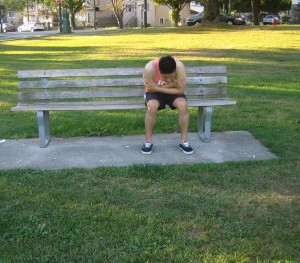Cramps happen to anyone young or old, active or sedentary people can and can develop by doing just anything. Elderly people, infants, overweight people and athletes are more susceptible to muscle cramps.
[youtube url=”https://www.youtube.com/watch?v=zGYB109TLQU”]The hamstring muscle is positioned at the rear part of the thigh that is utilized when moving the leg. When there is a hamstring cramp, it will lock up and cause rigidity and intense pain. Hamstring cramps typically happen when engaging in vigorous physical activity or even sleeping. There is tenderness and discomfort after a severe cramp in the hamstring. People who are susceptible to hamstring cramp include those who are overweight, engaging in strenuous exercises, dehydrated and those older than 45 years.

Causes of muscle cramps
- Lack of proper stretching before doing exercises
- Doing exercises under the heat of the sun
- Muscle fatigue
- Dehydration
- Imbalanced levels of electrolytes in the blood such as potassium, sodium, chloride, calcium and phosphate
Treatment for hamstring cramp
- Stop engaging in activities that causes the hamstring to cramp. Get plenty of rest and elevate the legs while resting.
- Stretch the hamstring by extending and placing the leg on an object waist high, then bend at the waist to lean forward and stretch the muscle found at the back of the thigh. Another option is to lie on the back and position the hands on the back of the affected thigh and pull the leg straight up at 90-degree angle to the floor. Keep the stretch until the cramp is relieved.
- Massage the affected leg in order to help relax the hamstring muscle.
- Apply an ice pack over the affected hamstring muscle for at least 15 minutes at 4 times every day after the cramp.
- Apply alternately hot and cold compress. You can apply heat to the affected hamstring by instructing the individual to take a warm bath and using a heating pad.
- Take the prescribed anti-inflammatory medications such as ibuprofen or acetaminophen in order to minimize pain and inflammation of the hamstring cramps.
- Stay well hydrated by drinking plenty of fluids in order to minimize the severity of the cramps.
If the painful cramps still persist despite these treatment options, seek medical help immediately.
Tips in preventing hamstring cramps
- Perform a 10 minute warm up and stretching for at least 10 minutes before a workout.
- Drink plenty of fluids before and after an exercise and utilize a warm compress and massage after strenuous workouts.
- Take vitamin supplements that contains potassium
- Eat a healthy and well balanced diet. Deficiency in electrolytes puts the individual at high risk for developing hamstring cramps.
- Gradually increase the activity level over a period of time. When the body is not yet adjusted to a strenuous activity, it can lead to the development of a muscle cramp.
- Perform proper stretching regularly even when not doing work out regularly. Take note that regular stretching helps in conditioning the muscles and prevent cramps.
